- Pima Medical Institute is a highly experienced and proven leader in health care. For more than 35 years, Pima Medical Institute has offered specialized, quality healthcare training that is quick and affordable, and we have been serving the mesa community since 1986. in mesa, we offer medical training in certificate programs like dental assistant, massage therapist, medical assistant, nursing assistant, pharmacy technician, phlebotomy technician, veterinary assistant. Your earning potential is in your hands as traditional health care continues to embrace alternative therapies such as massage. Students in the Massage Therapy School in Mesa have the advantage of receiving an education from a career college that has focused exclusively on medical and healthcare career training for more than 35 years.
School Highlights
Pima Medical Institute-Mesa serves 1,045 students (100% of students are full-time).
The college's student:teacher ratio of 9:1 is lower than the state community college average of 23:1.
Minority enrollment is 60% of the student body (majority Hispanic), which is less than the state average of 61%.
Quick Stats (2025)
- Enrollment: 1,045 students
- Student:teacher ratio: 9:1
- Minority enrollment: 60%
- Source: Integrated Postsecondary Education Data System (IPEDS)
Top Rankings
Pima Medical Institute-Mesa ranks among the top 20% of public schools in Arizona for:
Category
Attribute
Diversity
School Overview
The teacher population of 111 teachers has stayed relatively flat over five years.
Pima Medical Institute-Mesa
(AZ) Community College Avg.
Carnegie Classification
Special Focus Two-Year: Health Professions
Baccalaureate / Associates Colleges
Institution Level
At least 2 but less than 4 years
At least 2 but less than 4 years
Institution Control
Private for-profit
Private, for profit
Total Faculty
111 staff
296 staff
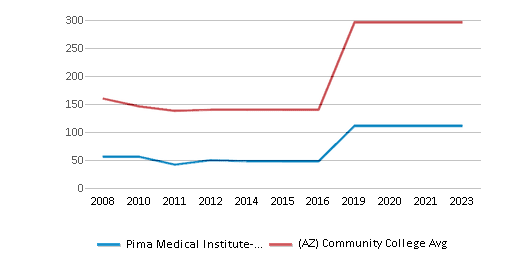
Number of Programs Offered
9
17
Student Body
The student population of Pima Medical Institute-Mesa has grown by 22% over five years.
The student:teacher ratio of 9:1 has increased from 7:1 over five years.
The Pima Medical Institute-Mesa diversity score of 0.72 is more than the state average of 0.71. The school's diversity has grown by 9% over five years.
Total Enrollment
1,045 students
3,009 students
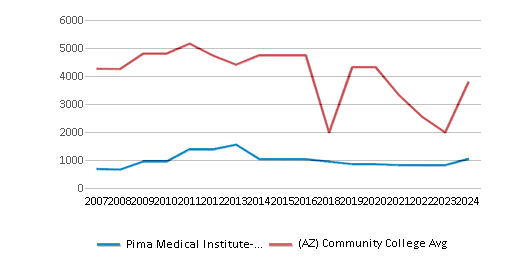
Student : Teacher Ratio
9:1
23:1
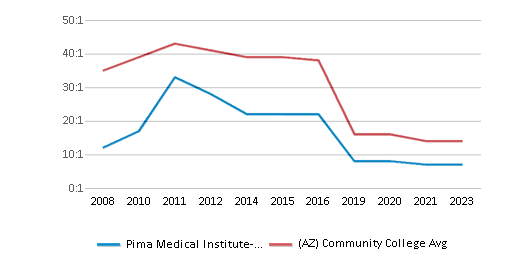
# Full-Time Students
1,045 students
1,238 students
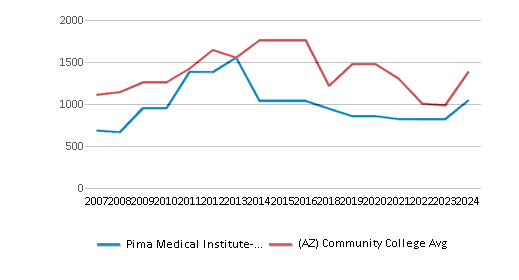
# Part-Time Students
n/a
4,184 students
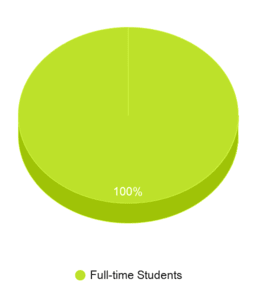
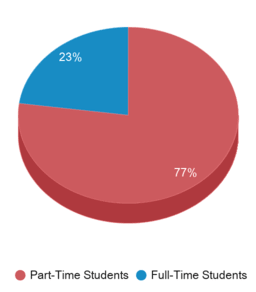
# Enrollment Undergraduate
104 students
339 students
# Full-Time Undergraduate Students
1,045 students
1,238 students
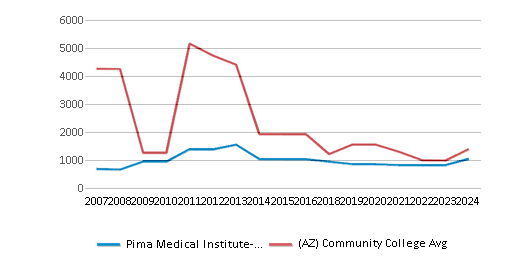
# Full-Time Graduate Students
n/a
66 students
# Part-Time Undergraduate Students
n/a
4,387 students
# Part-Time Graduate Students
n/a
11 students
Total Dormitory Capacity
n/a
250 students
% American Indian/Alaskan
6%
3%
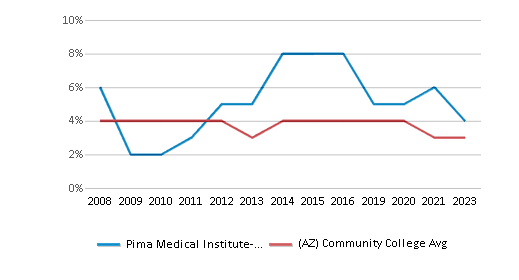
% Asian
4%
4%
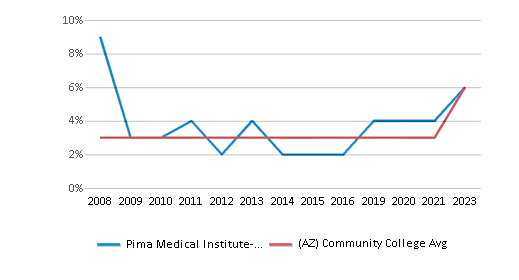
% Hispanic
33%
36%
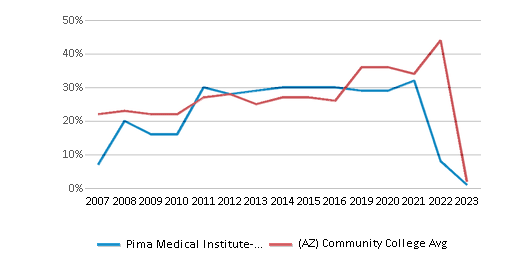
% Black
6%
7%
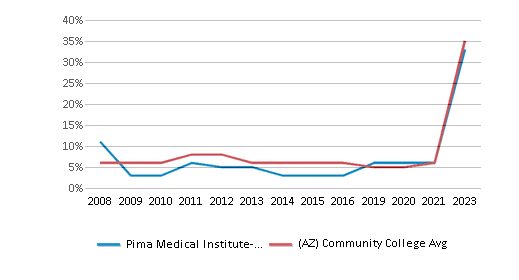
% White
40%
39%
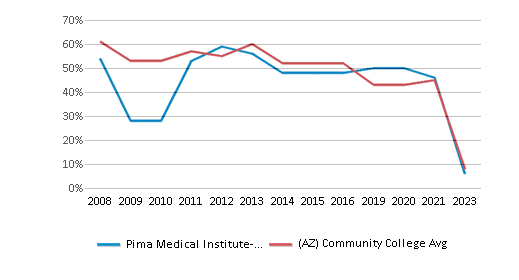
% Hawaiian
1%
2%
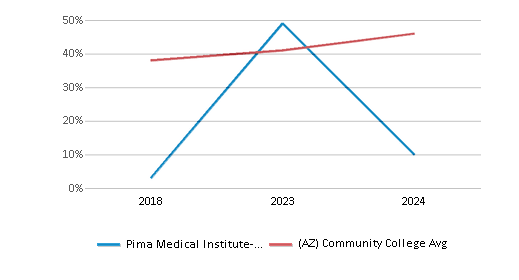
% Two or more races
8%
4%
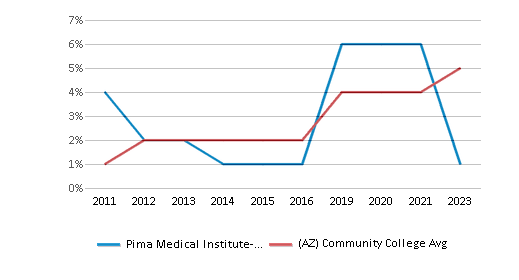
% Non Resident races
n/a
1%
% Unknown races
1%
4%
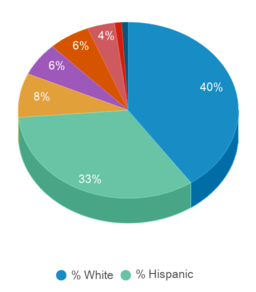
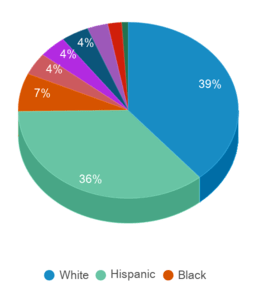
Diversity Score
0.72
0.71
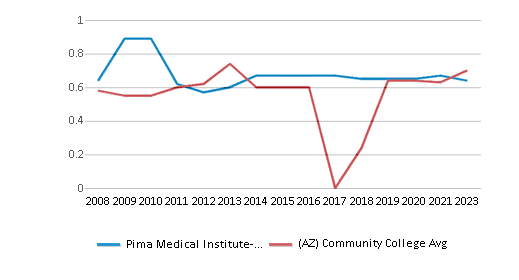
College Completion Rate (Students who graduate in less than 4 years)
0.5385%
0.4914%
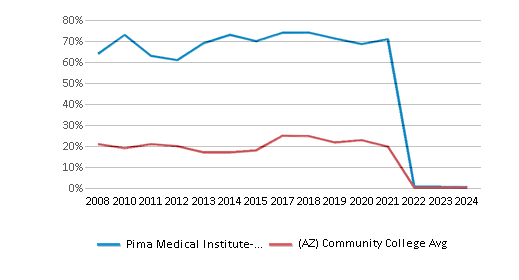
College Completion Rate (Students who graduate in 4 years or more than 4 years)
n/a
0.6%
Average Graduate Earnings (10 Years)
$29,800
$32,900
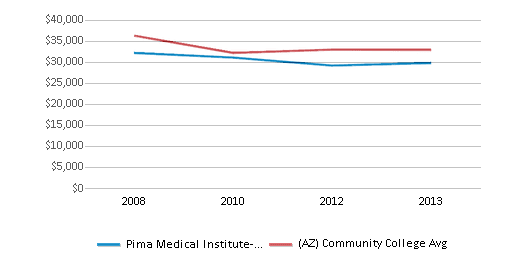
Tuition and Acceptance Rate
% Students Receiving Some Financial Aid
82%
82%
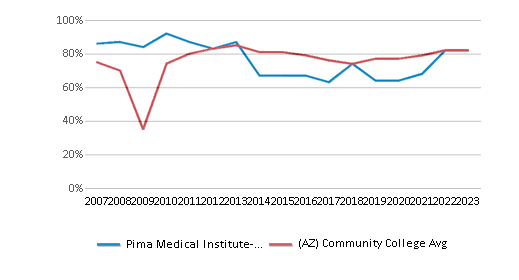
Median Debt for Graduates
$9,500
$9,500
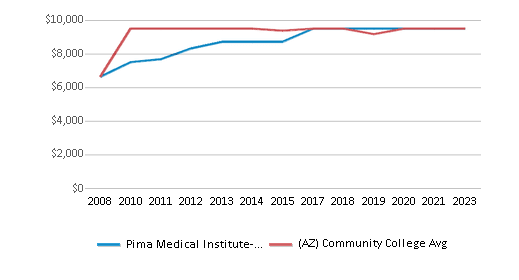
Median Debt for Dropouts
$4,718
$4,750
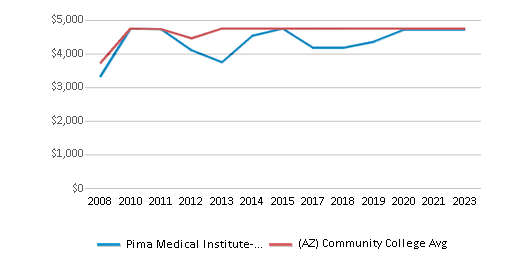
Acceptance Rate
n/a
100%
Source: 2024 (or latest year available) Integrated Postsecondary Education Data System (IPEDS)
Frequently Asked Questions
What is Pima Medical Institute-Mesa's ranking?
Pima Medical Institute-Mesa ranks among the top 20% of community college in Arizona for: Diversity in US community colleges.
Recent Articles

Obtaining Your Bachelor's Degree at a Community College
Explore the evolving landscape of community colleges offering bachelor's degrees, addressing affordability, accessibility, and workforce needs.

A to Z of Community College Certificates and Courses
From business and healthcare to technology and skilled trades, the article showcases the breadth of options available to students seeking to enhance their knowledge, develop new skills, or pursue career advancement.

What is a Community College?
This comprehensive guide explains what a community college is, its history, and its role in higher education. It covers the types of programs offered, differences from four-year colleges, benefits of attending, and important considerations for prospective students, providing valuable insights for those exploring educational options.







